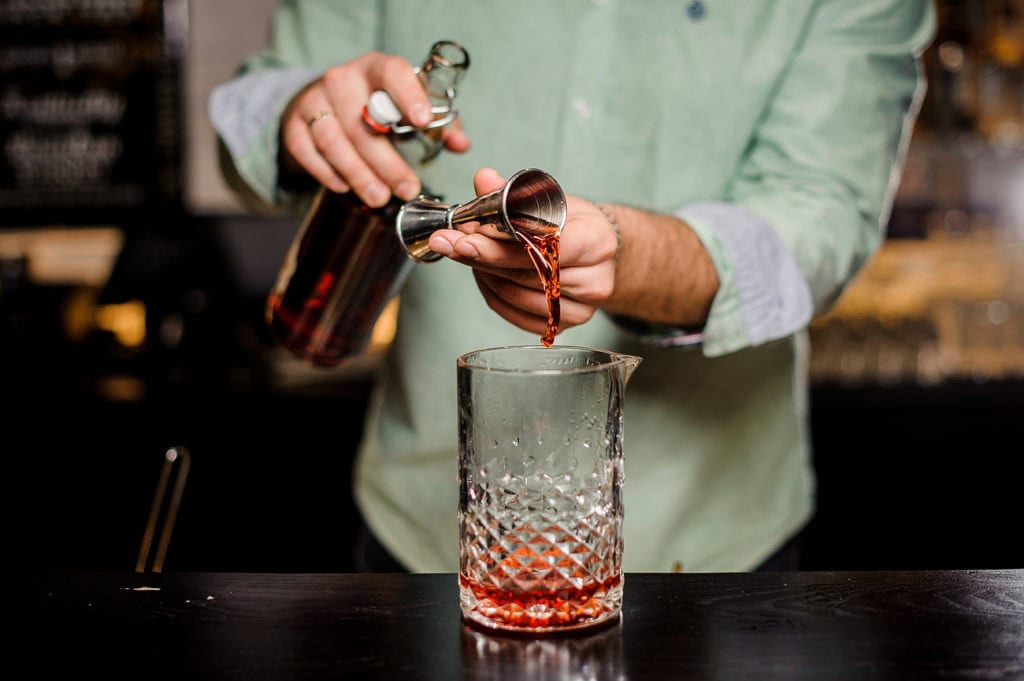Skip to content
- Bitters are traditionally made from infusing bark, botanicals, fruit peels, herbs, stems, and roots in a flavorless base.
- There are two types of bitters: digestive and cocktail. Digestive bitters (like Amaro, Aperol, Campari, and Jägermeister) are typically sipped straight or on the rocks after a meal to aid in digestion. A shot of Underberg, a digestive brand from Germany, is said to cure most hangovers.
- The grandaddy of the cocktail bitters market, Angostura bitters, debuted in 1824 as a remedy for tummy aches. Ernest Hemingway was a fan of the brand, mentioning it by name (as a main ingredient in a gin concoction) in Islands in the Stream, published after his death.
- Since the cocktail boom of the Roaring ’20s, aromatic cocktail bitters have been added to alcoholic drinks to create balance in the background, one that you notice as the liquid flows down your throat.
- Modern bitters now include compounds extracted from black walnuts, celery, chiles, chocolate, coffee, lemongrass, rhubarb, and seaweed.
- Bitters are hot and getting hotter. Global sales for all bitters products sat at an estimated $354 million in 2022 and are expected to rise to $634 million by 2027.
- Westbrook-based Vena’s Fizz House makes 14 types of bitters from local ingredients including white and spruce pine needles.
- Owl and Whale’s Sea Smoke Bitters, made in Portland, add a sea salt richness to boozy stirred cocktails and sweet and sour boozy drinks.
- Some makers seemingly love a play on words, with brands like The Bitter Truth (Germany), Bitter End (Santa Fe), Bittermens (New Orleans), Vena’s Itty Bitters (Maine), Ms. Better’s Bitters (Vancouver), and The Bitter Housewife (Oregon).
- A bottle of bitters comprises 20%–45% alcohol. As bitters are used in dashes and drops, the alcohol by volume in a single drink is difficult to trace. For booze-free bitters, use glycerin-based products like those made by Dram Apothecary.



